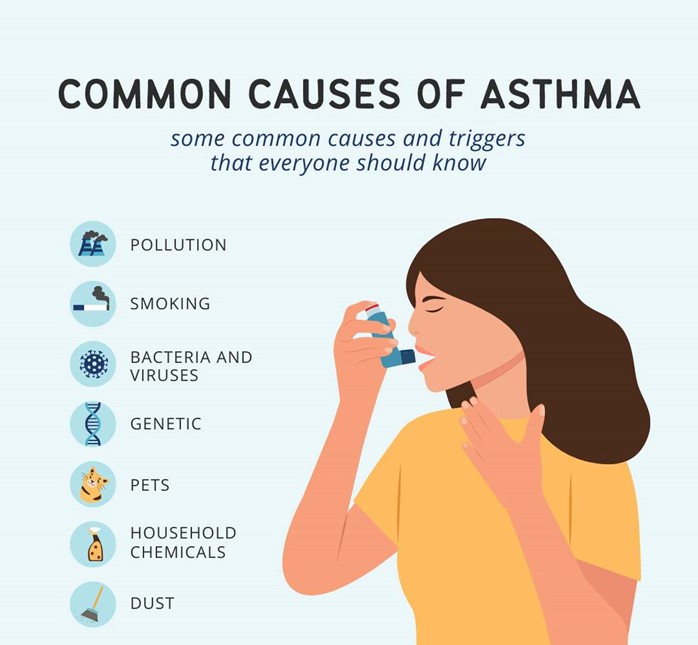While making rounds, the charge nurse notices that a young adult client with asthma who was admitted yesterday is sitting on the side of the bed and leaning over the bedside table. The client is currently receiving oxygen at 2 liters/minute via nasal cannula. The client is wheezing and is using pursed lip breathing. Which intervention should the nurse implement?
Increase oxygen to 6 liters/minute.
Call for an Ambu resuscitation bag.
Instruct the client to lie back in bed.
Administer a nebulizer treatment.
The Correct Answer is D
Choice A: Increasing oxygen to 6 liters/minute is not an intervention that the nurse should implement, as this can worsen bronchospasm and hypoxia by reducing the hypoxic drive and causing carbon dioxide retention. This is a contraindicated choice.
Choice B: Calling for an Ambu resuscitation bag is not an intervention that the nurse should implement, as this is not indicated for a client who is conscious and breathing spontaneously. This is an overreaction choice.
Choice C: Instructing the client to lie back in bed is not an intervention that the nurse should implement, as this can increase respiratory distress and compromise airway clearance by reducing lung expansion and increasing abdominal pressure. This is another contraindicated choice.
Choice D: Administering a nebulizer treatment is an intervention that the nurse should implement, as this can deliver bronchodilators and anti-inflammatory agents directly to the airways and improve ventilation and oxygenation for this client. Therefore, this is the correct choice.

Nursing Test Bank
Naxlex Comprehensive Predictor Exams
Related Questions
Correct Answer is ["B","D","E"]
Explanation
Choice A reason: This is incorrect because providing a diet low in phosphorus is not indicated for a client with cirrhosis of the liver. Phosphorus restriction is more relevant for clients with renal failure, not liver failure.
Choice B reason: This is correct because noting signs of swelling and edema is an essential intervention for a client with cirrhosis of the liver. Swelling and edema are signs of fluid retention and portal hypertension, which are common complications of liver disease.
Choice C reason: This is incorrect because increasing oral fluid intake to 1,500 mL daily is not advisable for a client with cirrhosis of the liver. Fluid restriction may be necessary to prevent fluid overload and ascites, which are common complications of liver disease.
Choice D reason: This is correct because monitoring abdominal girth is an important intervention for a client with cirrhosis of the liver. Abdominal girth measurement can indicate the presence and severity of ascites, which is a common complication of liver disease.
Choice E reason: This is correct because reporting serum albumin and globulin levels is a vital intervention for a client with cirrhosis of the liver. Serum albumin and globulin levels can reflect the liver's synthetic function and indicate the extent of liver damage.
Correct Answer is C
Explanation
Choice C is correct because pushing the undiluted Dextrose slowly through the currently infusing IV is the best way to administer the medication for a client with insulin shock. Insulin shock is a condition in which the blood glucose level drops too low due to excess insulin or insufficient food intake. This can cause symptoms such as confusion, sweating, tremors, or loss of consciousness. The nurse should administer 50% Dextrose IV as a bolus injection to raise the blood glucose level quickly and prevent brain damage.
Choice A is incorrect because asking the pharmacist to add the Dextrose to a TPN solution is not appropriate for a client with insulin shock. TPN stands for total parenteral nutrition, which is a type of intravenous feeding that provides all the nutrients needed by the body. TPN solutions contain dextrose, amino acids, lipids, vitamins, minerals, and electrolytes in specific concentrations and ratios. Adding extra dextrose to a TPN solution can alter its composition and cause complications such as hyperglycemia or fluid overload.
Choice B is incorrect because mixing the Dextrose in a 50 mL piggyback for a total volume of 100 mL is not effective for a client with insulin shock. A piggyback is a type of intravenous infusion that delivers medication through a secondary tubing attached to the primary tubing of another solution. Mixing the Dextrose in a piggyback can dilute its concentration and reduce its potency. It can also delay its delivery and onset of action.
Choice D is incorrect because diluting the Dextrose in one liter of 0.9% Normal Saline solution is not safe for a client with insulin shock. Normal Saline is a type of intravenous fluid that contains sodium chloride in isotonic concentration. Diluting the Dextrose in one liter of Normal Saline can lower its concentration and increase its volume significantly. This can cause complications such as hypoglycemia or fluid overload.
Whether you are a student looking to ace your exams or a practicing nurse seeking to enhance your expertise , our nursing education contents will empower you with the confidence and competence to make a difference in the lives of patients and become a respected leader in the healthcare field.
Visit Naxlex, invest in your future and unlock endless possibilities with our unparalleled nursing education contents today
Report Wrong Answer on the Current Question
Do you disagree with the answer? If yes, what is your expected answer? Explain.
Kindly be descriptive with the issue you are facing.
